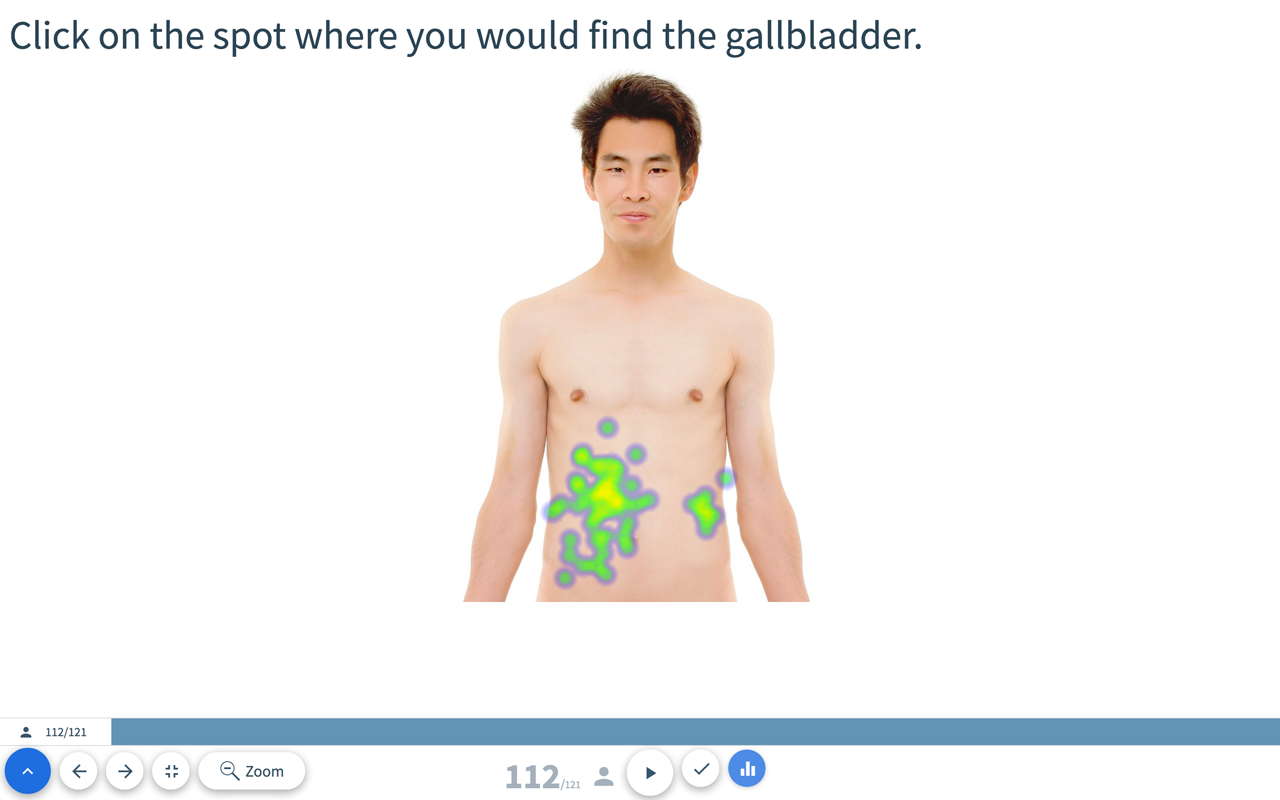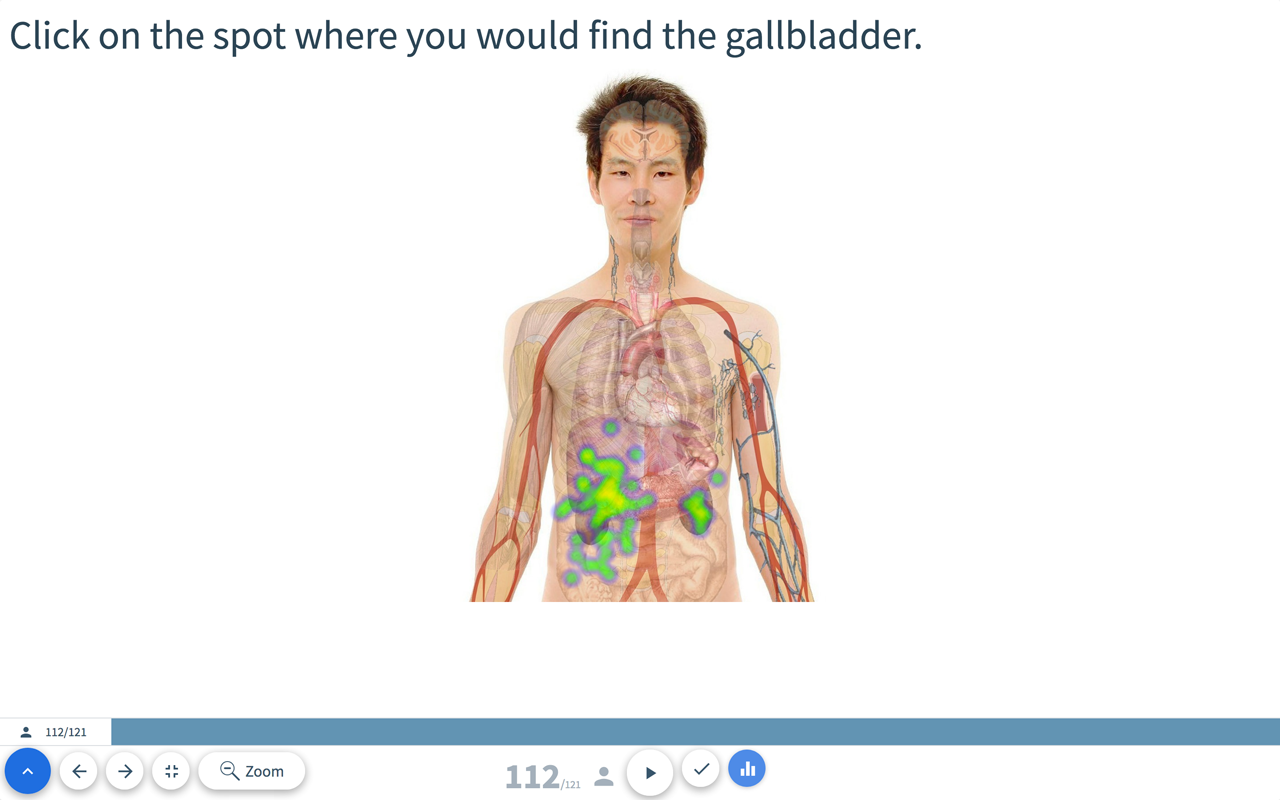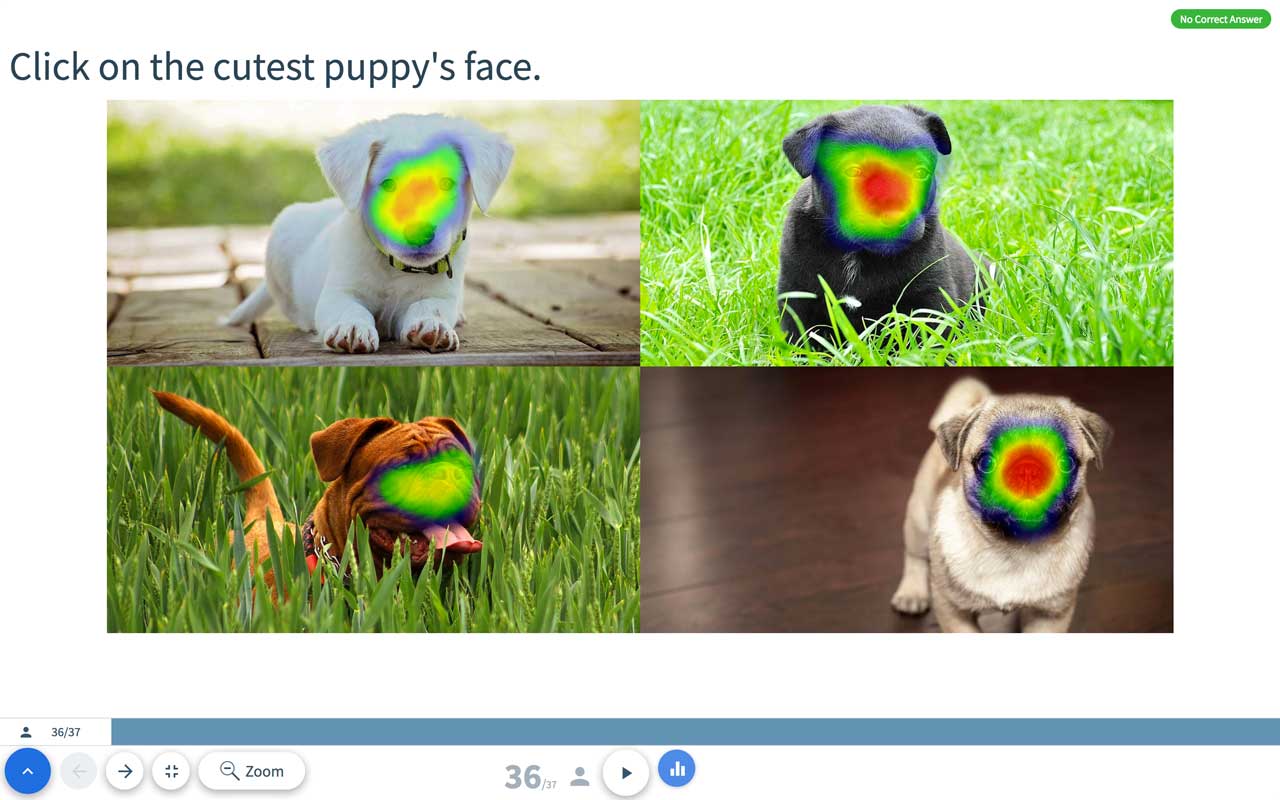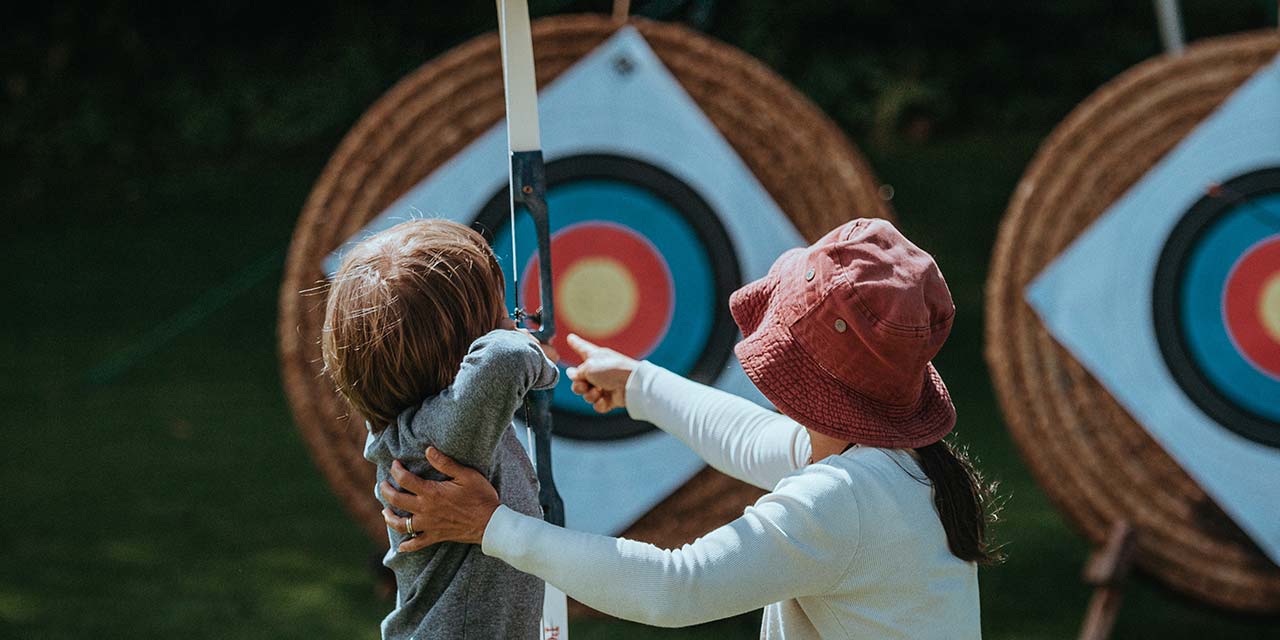Visual learners make up 65 percent of the student population, according to the Social Science Research Network. So it only makes sense that if you’re teaching using slides, diagrams and charts, you should test knowledge in class by asking lecture questions in the same medium.
Top Hat’s “click on target” question format shows students an image, tells them to tap (or click) on it and then displays the density of responses on a heat map. It’s easy to set up and has several applications for classroom instruction and for gathering student feedback.
Just upload a picture as part of your question, set parts of the map as representing a correct answer, and make the question count for credit, participation marks, or just for fun.
As well as the simplest use—asking students to find or predict an answer in an image or chart—we’ve worked with instructors to develop some even more creative applications for this kind of Top Hat question. Here are three to inspire you:
-
-
Replacing the image
-
An effective trick for a click on target question: set a picture, allow students to add their responses, then generate a heatmap of those answers. When you present those results, do it over a new image.
This method can help illustrate the way two concepts relate, or to show a correct answer that was hidden. There are many disciplinary applications of this method, in courses such as mathematics, economics, and here, in biology:


-
-
Ratings
-
Welcome to the matrix—multiple choice in two dimensions. Present your students with a scale that has one opinion on the horizontal axis and a second on the vertical, and not only can you get your class to answer lecture questions with more than one factor, you’ll also get nuance.
There are applications in teaching and in student feedback. For example, a history instructor could ask to what extent did the Cold War end because of Soviet economic stagnation, American foreign policy, a combination of both, or neither? Placed on horizontal and vertical axes, those questions will lead to a robust class discussion once students’ answers appear on the big screen.
And for student feedback, one U.K.-based professor used a grid-based image to ask students their opinion about using Top Hat, over two factors—ease of use, and fun. How they responded—and how strongly they felt—is easy to see at a glance.
First experience teaching with @tophat The students seemed to think it was easy / fun on balance! pic.twitter.com/ypg49X8W3h
— Richard Badge#StandWithUkraine (@richardbadge) November 13, 2017
-
Survey—voting with click on target.
This can be a different way of asking a multiple choice question—or taking a survey with pictures. You can easily paste together several images in a grid with some simple-to-learn free software, such as Paint.net. When you word these kinds of lecture questions, consider telling students to tap a specific part of each image, in order to clearly portray how many responses there were.
Some professors have found that students enjoy the click on target questions so much that they will even create images of words for students to click on, instead of using a regular multiple choice question.
Here’s an example of the kind of question you can offer, for participation marks:

For more ideas on writing click on target questions, take a look at these posts on our comprehensive knowledge base and support forum:
- Creating a Click on Target Question
- Identifying Non-Circular Targets for Click on Target Questions
- Click on Target Extra Attempts
If you’d like to try Top Hat for yourself, now you can register to take a test drive in your own browser, without needing to book a phone appointment. Register from the home page—it takes less than a minute.
Related pages
Learn how easy it is to make a test with Top Hat


